FOR IMMEDIATE RELEASE
Contacts:
Annia Quiroz – Conservation Alliance Engagement Coordinator
Phone: 480.481.8187
E-Mail: aquiroz@dbg.org
Partners in the Central Arizona Conservation Alliance (CAZCA), convened by the Desert Botanical Garden, unveiled its “Greenprint” for Maricopa County this week. The GIS-based decision-support tool compiles data from across agencies and organizations to identify areas of high conservation value within Maricopa County.
“The Greenprint has the potential to transform the way we make decisions about how land and water are managed, developed, and protected in our region,” says Stacie Beute, CAZCA’s Program Director. “It allows decision-makers to see our most valuable natural assets in one place, so that we can consider their protection ahead of and within development.” The Greenprint allows users to visualize biological assets such as wildlife corridors, waterways, or important habitat alongside contextual information such as land ownership, level of protection, and build-out projections to facilitate identification of the region’s most powerful opportunities for conservation. For example, the tool shows Gila and Salt Rivers to be high-value natural areas, rich in biological and recreational assets, however, both these waterways are under-protected. “Now we can do a better job of prioritizing land and water conservation for a wider range of human and ecological benefits,” says Ian Dowdy, Director of the Sun Corridor Legacy Program at the Sonoran Institute.
The Greenprint also reveals opportunities to weave nature through cities. “Our landscape architecture students took the Greenprint for a test run this fall to examine how to enhance ecological connections in urban neighborhoods of South Phoenix between South Mountain and the Salt River,” says Paul Coseo, Senior Sustainability Scientist at Arizona State University. “The Greenprint helped students to examine a variety of scales from regional wildlife connections down to the neighborhood tree canopy. The tool is also an exciting resource for knitting nature back into our urban neighborhoods.”
More than 25 partners contributed data or participated in the development of the Greenprint. The Nature Conservancy, the Trust for Public Land, and Desert Botanical Garden funded and managed the
tool’s development. The Arizona Game and Fish Department, Sonoran Institute, McDowell Sonoran Conservancy, Maricopa County Parks and Recreation Department, Arizona State University, White Tank Mountains Conservancy continue to be critical collaborators.
The beta version of the Greenprint can be viewed here: bit.ly/CAZCAGreenprint
About Central Arizona Conservation Alliance (CAZCA)
The Central Arizona Conservation Alliance (CAZCA), launched in 2012 by Desert Botanical Garden, works to develop, align, and unify the efforts of more than 60 organizations to conserve, restore, and raise awareness for open space in Central Arizona.


